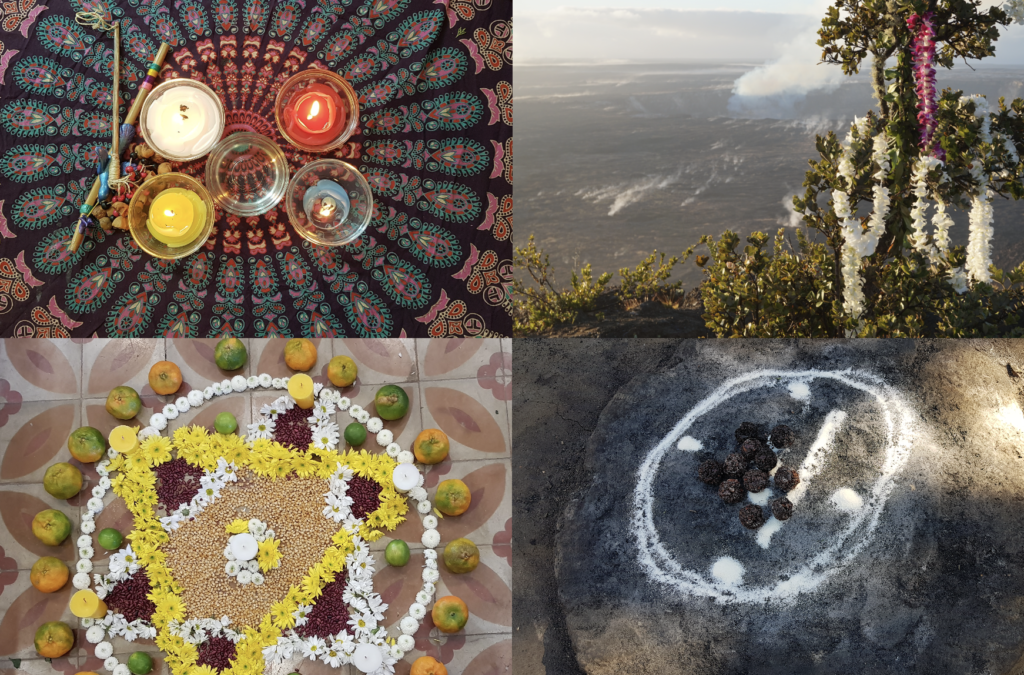Spirituality and sacred sites are different in each Indigenous People and is a fundamental part of their identity since they are knowledge and teachings that were transmitted from generation to generation. It manifests itself above all in people’s daily lives, in their relationships with the land, forests and ecosystems, in all their relationships with nature and their environment.
Sacred sites for Indigenous Peoples are places within the landscape that have a special meaning or transcendence under their traditions. Hills, rocks, water holes, trees, plains, lakes, billabongs, mountains, forests, frozen lands, and other natural features can be sacred places. In coastal and marine areas, sacred sites can include features found both above and below the water.
The worldview of the Indigenous Peoples is based on their spirituality, beliefs and practices. They are the central axis of their values, which is why they are related to every aspect of their lives and are reflected in their lifestyles.
These are transmitted and manifest in oral traditions, art, social uses, rituals, festive acts, knowledge and practices related to nature and the universe and ancestral knowledge.
In this way, the Indigenous Peoples, for hundreds of years, recognized sacred spaces for their special connection with nature and their beliefs. These sites were established as sacred sites and in the same way they were respected and protected by the indigenous communities. Thus, this information was transmitted generation after generation with the mandate to protect and preserve them. The sacred places are recognized and considered a source of inspiration and spiritual values.
Sacred sites are considered an important part of their cultural heritage; they can be natural or architectural spaces where communication is established with their deities and ancestors and include relations between peoples as a community. Each indigenous people have tangible and intangible aspects that constitute their heritage.
The spirituality and sacred sites of the Indigenous Peoples have such a close relationship with nature that most of the Indigenous Peoples represent these beliefs on the land, in the water, in the animals, in nature. The related ceremonies and rites are sacred manifestations of petition or thanks.
Despite the great value that spirituality and sacred sites have for Indigenous Peoples, they are in a situation of vulnerability and face multiple conflicts in relation to their use and they are places that bring together many identity elements of indigenous and tribal peoples. of the planet.
Some countries lack clear policies regarding the creation and conservation of cultural heritage or do not recognize them as sacred sites of Indigenous Peoples, which allows their destruction and use of these spaces for other purposes.
States must guarantee the right of Indigenous Peoples to manifest, practice, develop, and teach their traditions, customs, and spiritual ceremonies, in addition to the right to maintain, protect, and have private access to their religious and cultural sites; and the right to use, control and protect their lands.
In order to protect spirituality and sacred sites, it is necessary that the transmission of ancestral knowledge be preserved and that there be recognition of the sacred lands as part of each Indigenous People.
Sacred natural places are the origin and heart of life. They are the roots and inspiration. We cannot survive without them, so we must have the responsibility to protect and care for them.
Some examples of a sacred site: Uluru in Australia, the peaks of San Francisco in the United States, the Wao Kele or Puna forest in Hawaii or the Ganges River in India, Machu Pichu in Peru, the Phiphidi waterfall in the province of Limpopo in South Africa, the Kayas forest in Kenya, are examples of sacred places in nature that have subtle and different meanings for people of various cultures.

